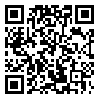Volume 23, Issue 103 (8-2013)
J Mazandaran Univ Med Sci 2013, 23(103): 20-26 |
Back to browse issues page
Mohsen Forughipur 
 , Amir Moghadam-Ahmadi
, Amir Moghadam-Ahmadi 
 , Ahmad Pourrashidi
, Ahmad Pourrashidi 
 , Zahra Tafakhori
, Zahra Tafakhori 
 , Atena Sharifi-Razavi
, Atena Sharifi-Razavi 
 , Sahar Fadaee
, Sahar Fadaee 
 , Elham Salehian Nik
, Elham Salehian Nik 


 , Amir Moghadam-Ahmadi
, Amir Moghadam-Ahmadi 
 , Ahmad Pourrashidi
, Ahmad Pourrashidi 
 , Zahra Tafakhori
, Zahra Tafakhori 
 , Atena Sharifi-Razavi
, Atena Sharifi-Razavi 
 , Sahar Fadaee
, Sahar Fadaee 
 , Elham Salehian Nik
, Elham Salehian Nik 

Abstract: (31887 Views)
Background and purpose: Optic neuritis is one of the common causes of unilateral or bilateral visual loss. The most common cause of this disorder is demyelinating disease of the central nervous system (CNS) and most of the patients with optic neuritis will present other signs of multiple sclerosis (MS). The diagnosis depends on the clinical findings, however, magnetic resonance imaging (MRI) is the choice of imaging method for detecting demyelinating lesions. The aim of this study was to investigate the MRI findings in patients with optic neuritis.
Materials and methods: This descriptive-cross sectional study consisted all patients with optic neuritis (n=70) referring to neurology department of Ghaem Hospital in Mashhad, Iran, 2008. The diagnosis was made based on clinical signs and symptoms. Information including demographic details and visual findings was collected through questionnaires. Conventional brain MRI was performed for all patients and evaluated for abnormal findings. We used chi square test for qualitative variables and T-test for quantitative variables
Results: Thirty-nine (55.7%) patients with optic neuritis were seen with abnormalities in MRI. In this group, 31 (79.4%) cases had plaques in the supratentorial and 22 patients (54.6%) in the infratentorial areas. In 24 cases (61.5%) periventricular region was the most common site with plaques. We observed optic nerve lesions in two (5.1%) patients.
Conclusion: Standard MRI of the brain is useful for detecting CNS lesion, however, it is ineffective in revealing optic nerve lesions. So, appropriate imaging techniques must be used in such patients to find abnormalities in the affected optic nerve.
Type of Study: Research(Original) |
Subject:
Neurology
| Rights and permissions | |
 |
This work is licensed under a Creative Commons Attribution-NonCommercial 4.0 International License. |
